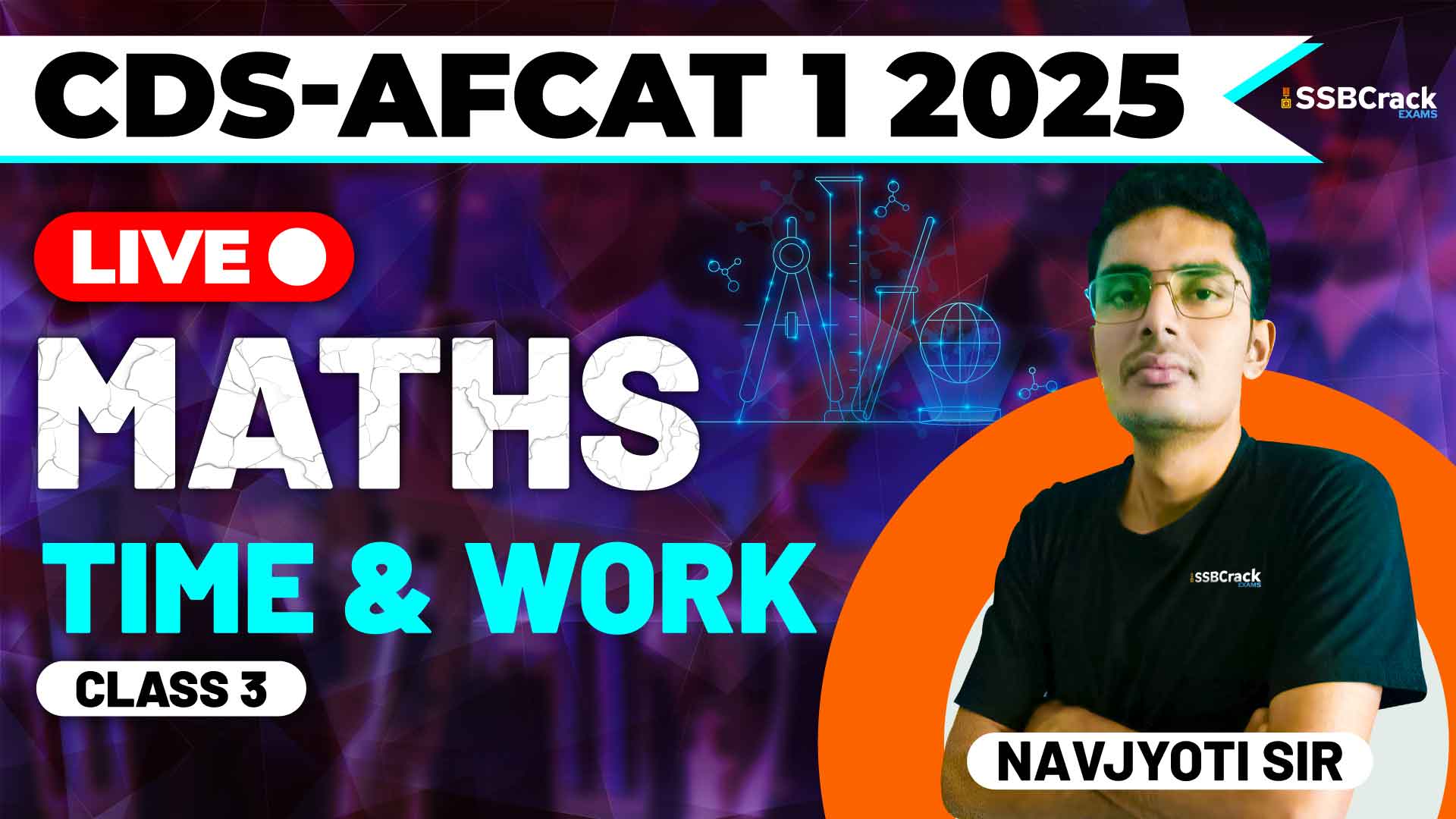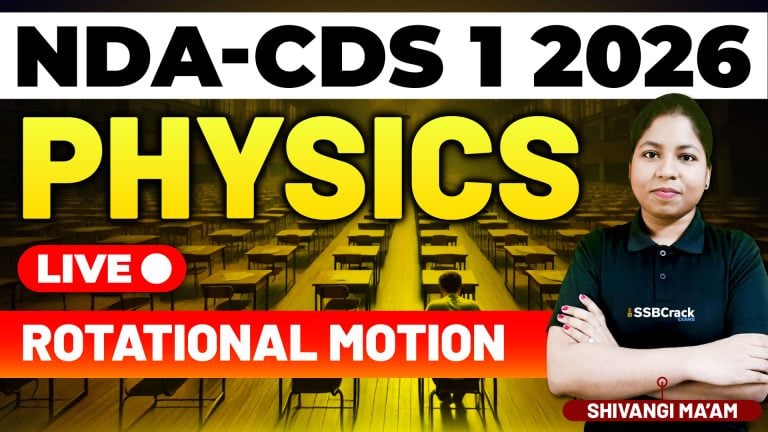In competitive exams like the Combined Defence Services (CDS) and Air Force Common Admission Test (AFCAT), the maths section plays a crucial role in determining a candidate’s overall score. Among the numerous topics that make up the maths syllabus, Time and Work is a fundamental and frequently tested subject. A recent class on this topic focused on practicing multiple-choice questions (MCQs) based on Time and Work, along with its extension into Pipes and Cisterns problems.
This blog will delve into the main concepts discussed during the class, as well as the strategies essential for mastering Time and Work problems for the CDS and AFCAT exams.
Understanding the Basics of Time and Work
The foundation of Time and Work problems lies in calculating how long it takes one or more individuals (or machines) to complete a task. It can also involve understanding the work done by multiple individuals or entities when they collaborate, how different efficiencies affect task completion, and what happens when multiple forces are at play, as is the case with Pipes and Cisterns.
Let’s break down the key sub-topics covered during the class:
1. Work Efficiency
Efficiency in Time and Work problems refers to how much of a task an individual or machine can complete in a given time, usually expressed in terms of a day’s work. If a person can complete a task in 10 days, they complete 1/10th of the task per day. This basic concept helps in understanding how multiple workers or machines can combine their efforts to finish a job faster.
The class emphasized the importance of understanding how to calculate efficiency and how to use it when solving problems involving two or more workers or machines. For instance, if two workers can complete a task together, the sum of their individual efficiencies will determine how fast the task is completed.
2. Work Done by Multiple Entities
In many Time and Work problems, two or more entities (people or machines) are working together on a task. The combined work done per day (or hour) by all entities involved can be added up to find the total time required to finish the job.
The class featured several MCQs where two workers started working together, but one left midway through the task. These kinds of problems are common in competitive exams, as they test your ability to account for varying efficiencies over time. Understanding how the departure or entry of a new worker affects the overall time to complete the task is key to solving these types of questions.
3. Pipes and Cisterns
This is a common variation of Time and Work problems. Instead of workers, you have pipes filling or emptying a tank (cistern). The principles are similar: pipes that fill the tank can be thought of as doing “positive work,” while pipes that empty the tank are reducing the work done (doing “negative work”).
The class covered MCQs where multiple pipes were working simultaneously, with some pipes filling the tank and others emptying it. This concept mirrors real-life situations, where sometimes two forces work against each other. The ability to calculate the net work done—the difference between the rate of filling and the rate of emptying—determines how fast the tank will be filled or emptied.
4. Successive Work or Time Intervals
In some Time and Work problems, the workers or machines may not work continuously. For example, one worker might take over from another after a certain period, or a machine might run for a few hours before being stopped. Problems involving shifts, intermittent work, or time intervals add a layer of complexity to the basic Time and Work framework.
In class, students practiced MCQs that required calculating how much work was completed in different time intervals and how changing the number of workers or machines midway through the task affected the outcome.
Strategies for Preparing Time and Work for CDS and AFCAT
While Time and Work problems are based on simple principles, they can vary in complexity and difficulty. Here are some essential strategies discussed during the class that can help you prepare for this topic effectively:
1. Master the Basic Concepts
Before jumping into complex problems, it is crucial to have a firm grasp of the basic principles of Time and Work. Understand how to calculate the amount of work done in a unit of time and how to apply this concept when multiple workers or machines are involved. Once you are confident with the basics, tackling more difficult problems becomes easier.
2. Use the Unitary Method
The unitary method, which involves calculating the work done by one entity in one unit of time (such as one day), is one of the simplest and most effective ways to solve Time and Work problems. By determining how much work one entity can complete in a day, you can then calculate how long it will take for the task to be finished, whether by a single worker or multiple workers.
The class highlighted the use of this method for simplifying complex problems. This approach is particularly useful when solving pipes and cisterns problems or when calculating the combined work of multiple workers.
3. Practice Pipes and Cisterns Problems
Since pipes and cisterns problems are a variation of Time and Work, they frequently appear in CDS and AFCAT exams. These problems require a different mindset, as they introduce negative work (emptying the tank) along with positive work (filling the tank). Practice problems that include multiple pipes working simultaneously, and get comfortable calculating the net effect of pipes working against each other.
4. Handle Efficiency and Time Intervals
Efficiency comparisons between workers or machines are a frequent feature of Time and Work problems. Be prepared to calculate how much faster or slower one worker is compared to another. Additionally, practice problems where workers or machines start or stop at different times. This will help you manage time intervals effectively, a critical skill in competitive exams where you must keep track of work done in multiple phases.
5. Solve Previous Year MCQs
One of the best ways to prepare for Time and Work problems is by solving previous year questions from CDS and AFCAT exams. This gives you a clear understanding of the type of problems that are typically asked, and also allows you to gauge the level of difficulty. It will also familiarize you with the format of MCQs, helping you improve both speed and accuracy.
The class emphasized that students should practice a range of MCQs from previous papers to develop an intuitive understanding of how these problems are structured.
6. Take Mock Tests
Along with solving previous year questions, taking mock tests is crucial for building exam stamina and speed. Mock tests help you get a feel for how well you can manage your time during the exam. They also serve as a benchmark for your progress, allowing you to identify areas where you need improvement.
The class suggested regular timed practice sessions to simulate real exam conditions. This helps you build the mental endurance needed for answering Time and Work problems efficiently in the actual exam.
Conclusion
Time and Work is an essential topic in the mathematics section of the CDS and AFCAT exams. Though the underlying principles are straightforward, the variations in problem types—such as those involving multiple workers, pipes and cisterns, and shifts—can make these problems challenging. A recent class on this topic focused on solving MCQs and practicing real exam scenarios to strengthen problem-solving skills.
To prepare effectively for Time and Work problems, it is important to focus on the basic concepts, practice solving both standard and complex problems, and incorporate regular mock tests and previous year papers into your study routine. With consistent practice and the right strategies, you can master Time and Work problems and boost your overall performance in the CDS and AFCAT exams.
Good luck with your preparation!



















